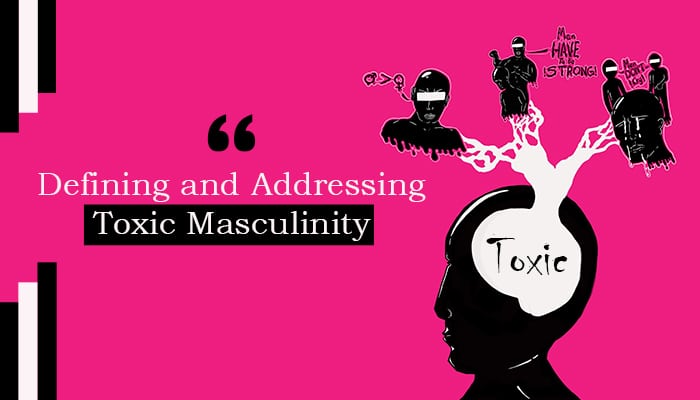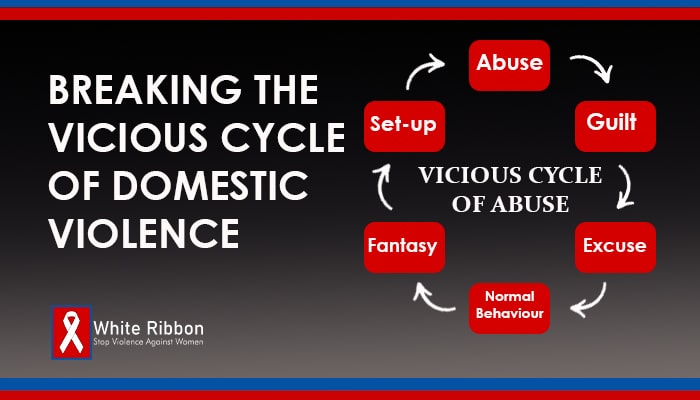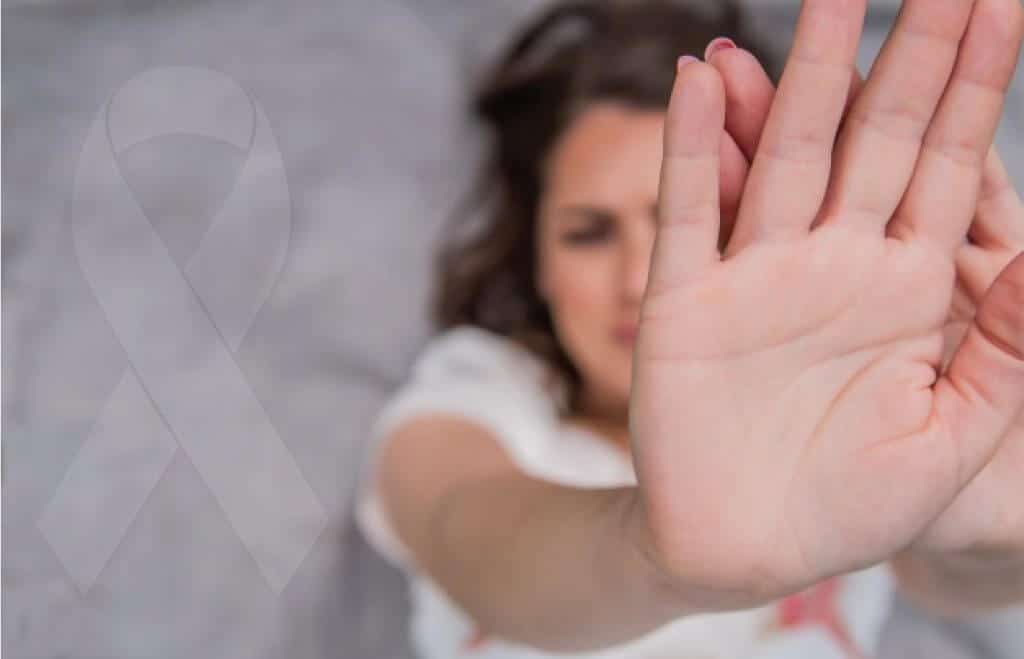by admin | Dec 3, 2022 | Uncategorized
White Ribbon Pakistan is a men’s movement for ending violence against women and girls. We are working with a different approach to counter the issue of violence by addressing the patriarchal mindset of individuals and society. We believe that men’s involvement in our initiative is a prerequisite to combating violence against women. Justice can be provided by those who do injustice because they have the power to do both. It is not sufficient to create awareness about women’s rights among women only but it is also necessary to engage men to challenge the unfair power relations that promote gender-based violence. Men even in instances where they are not a part of the problem can bring forth the solution by persuading others to question and stop violence against women in every form
Both men and women from all walks of life, who are willing to end gender based violence in Pakistan through changing the culture that lead to violence against women, can join the “White Ribbon Ambassador and champion Programme”.
People from different background, skills and knowledge are encouraged to be ambassador to strengthen communities and creating lasting positive change.
We will give you training about carrying out the role.
Provide you access to a variety of online materials and resources.
We will keep you up to date with White Ribbon news and developments.
Invite you to the White Ribbon events and activities.
We will listen to your suggestions and feedback.
We will award you with a certificate of ambassador.
- Use White Ribbon Pin, logo and resources that are provided as directed.
- Raising awareness, lead and advocate to end all kinds of violence against women.
- Speaking out against all forms of violence against women, as well as being involved in activities that promote women’s safety and wellbeing.
- Engaging and supporting men to involve in the movement through promoting (online/offline) and participating in the activities that can bring a change in society.
- Campaigning at the local and national level to promote that women’s safety is a men’s issue too.
- To promote the White Ribbon through engaging and educating your peers and challenge sexism in everyday life.
- Speak about ending violence against women at community events, TV programs, social media and where possible.
- Act as a positive role model for other men and boys by actively engaging in positive behaviour and actions towards women.
- Use White Ribbon presentation and material as well as follow guidelines for other events.
- Encourage people especially men to take the White Ribbon Pledge. To keep in touch with White Ribbon and offer feedback, suggestions and advice.
White Ribbon Ambassadors will be selected for a period of one year. Every year, we will renew your ambassadorship and provide you with another certificate.
If you no longer wish to be an Ambassador or if you need to take a break from your role you will have to inform White Ribbon by submitting a formal request
Minimum Specific Deliverables
- You will talk about violence against women on social media at least once a month tagging White Ribbon in your posts.
- As an ambassador or champions of White Ribbon, you will talk about gender-based violence at any event at least once a quarter.
- You will wear White Ribbon Pin during media and public appearances.
- The Ambassadors and Champions will be required to connect with us once a month to plan and discuss the activities and give feedback.
- You will persuade the maximum people especially men to take the White Ribbon Pledge.
If you are interested in becoming a White Ribbon Ambassador or champion, the first step is to pledge “never to commit, excuse & remain silent about violence against women”.
- You will always adhere to the White Ribbon Values and will make sure people know that you are a volunteer, not an expert.
- You will never share any confidential or sensitive information that is disclosed to you in your role as an Ambassador.
- You will not accept gifts, money or any item of value from anyone in connection with your role as an Ambassador.
- You will avoid any act in any way that could bring White Ribbon into disrepute.
- By agreeing to the code of conduct you will be making the declaration “that nothing in my past or current personal life would damage the credibility of White Ribbon Pakistan”.
Register with us by filling up a form
Take White Ribbon Pledge and agree to our code of conduct
Certificate Award Ceremony and the announcement in the media (traditional and social media)
If you are interested in becoming a White Ribbon Ambassador, please contact us.
Email: info@whiteribbon.org.pk
Mobile: 03354887775
Phone: 042 35883570-2
Office Address: 2/12 M-Block, Gulberg III, Lahore.
Or fill out our form so that we can get back to you:

by admin | Nov 28, 2022 | Uncategorized
“Toxic masculinity” (sometimes called “harmful masculinity”) is often used as a catch-all term for the behaviours of men and masculine folks.
In reality, though, there’s plenty of room for someone to be masculine without being toxic or engaging in behaviour that’s dangerous or hurtful.
So what does the phrase actually mean? The popular term points to the very real problems of male violence and sexism.
If you think about the common narrative around men and boys that teaches them that boys don’t cry or that they should be able to walk it off, take it like a man under any circumstance, you could imagine how the habitual practice of not telling about your pain or worries could have significant implications.
There are downstream consequences of lacking a healthy outlet to dispense negative emotions. When you’re bottled up all the time, it’s like Whac-a-Mole. It will reappear in another way.
Common Traits of Toxic Masculinity
Traits of toxic masculinity include themes of:
- Mental and physical toughness
- Aggression
- Stoicism, or not displaying emotion
- Self-sufficiency
- Emotional insensitivity
Societal impact
While toxic masculinity definitely has effects on individuals, it can also have larger societal impacts.
Here are just a few of these impacts. Keep in mind that, while toxic masculinity plays a contributing role in these issues, it isn’t always the sole cause.
Rape culture
Toxic masculinity ideology tends to treat women as sexual objects, contributing to ongoing issues, like rape culture.
This refers to the tendency to remove blame from sexual assaulters and place it on the victim. “Boys will be boys” might sound harmless when it comes to kids roughhousing on the playground. But it can be used as an excuse for violent behavior or not respecting boundaries.
Violence
Toxic masculinity also teaches men and masculine folks that aggression and violence are key to solving problems — unless you want to appear weak.
The resulting violence, which can show up in many forms, including intimate partner violence, can have far-reaching effects on those who aren’t even directly involved.
Social exclusion
Again, there are plenty of men who do not exhibit toxic masculinity. Still, these individuals may be negatively affected by those who display those traits in the form of social exclusion. Especially among children and teens, those who don’t fit inside that predetermined box of what it means to be masculine might find themselves disliked because of it.
Addressing it
There’s no single answer to addressing the problem of toxic masculinity. Doing so requires societal shifts around several things, including gender stereotypes and the stigma surrounding mental health.
But, if you’re a man, there are a few things you can do to reduce the impact of toxic masculinity in both your own life and the lives of those around you:
- Be okay with acknowledging where you are. Everyone has a starting point. There’s no way to change or move forward if you aren’t able to be honest about the things you want to change. Maybe you weren’t a skilled communicator in past relationships. Or maybe you’ve relied on your physical size or strength to intimidate others. Don’t beat yourself up for your past actions. Put your attention on where you currently stand and how you can move forward.
- Have tough conversations. Ask your friends their perspective on how you handle tough situations or your biases in relation to masculinity. Do your part not to get defensive, and really listen to how your actions have impacted others. You might be surprised that certain things you did or said came across differently from how you intended.
- Do the work. Above all, undoing toxic masculinity as a man involves being true to yourself, not some false idea of the person you should be. Finding your true self is a process that takes time. A therapist can guide you through this process and help you alter unhelpful thinking patterns.
by admin | Nov 25, 2022 | Uncategorized
For the first time in Pakistan, White Ribbon, which is part of global men’s movement present in over 50 countries for ending violence against women and girls, has announced the launch of White Ribbon Workplace Gender Inclusion Awards for corporate sector in Pakistan.
Talking to the media Founder and President of White Ribbon Mr. Omer Aftab said that these awards will be presented annually to companies which use their position to advocate for gender equality and take steps to advance women’s empowerment. These awards are being launched on November 25, the White Ribbon Day for the Eradication of Violence against Women.
Mr. Aftab further added that White Ribbon Awards will be presented annually to the companies which advocate for gender equality and take steps to advance women’s empowerment at workplace. The awards will celebrate and acknowledge the best practices and policies of corporates that take part and highlight gender justice and gender inclusion for their workforce, customers, community and through their CSR and brand communication and advertisements.
All organisations that work on gender equality and have shown a positive impact regarding women empowerment at workplace are eligible to apply for these awards. There are three categories of White Ribbon Awards: Gender Inclusive Workplace, Gender Responsive Marketplace and Community Engagement and Partnerships. For all categories, survey forms will have to be submitted online. Finalists will be selected based on independent ranking system. ##
Editor’s note:
Violence against women is a shameful reality across the world. Mostly it is committed by men. It is rooted in gender inequalities, and it still far too often goes unnoticed and unchallenged. The White Ribbon Campaign exists to change this.
Men and boys wearing the White Ribbon declare that they will never commit, excuse, or remain silent about men’s violence against women. White Ribbon is one of the world’s largest male-led campaigns to end men’s violence against women. It started in 1991 in Canada, and is now active in over 50countries across the globe. Every year it is growing stronger as more men and boys realise that women’s and girls’ safety is their issue too.

by admin | Nov 15, 2022 | Uncategorized
Domestic abuse frequently follows a cycle. The first step towards ending the cycle of violence is to comprehend it (and the elements that contribute to it). Domestic abuse typically follows a pattern or cycle of violence:
The White Ribbon Campaign aims to end the vicious cycle of domestic violence in which abusive people engage in aggressive, disrespectful, or violent behavior. This sets off a vicious cycle of abuse. Abuse is a technique to show dominance over you and let you know “who is boss.” He exhibits guilt after abusing because he fears getting caught and suffering the consequences of his abusive behaviour. The abuser will next attempt to justify his actions by making a variety of justifications or blaming the victim for his actions, all to escape responsibility. Domestic abuse frequently follows a cycle. The abuser then makes every effort to retake control and maintain the relationship with the victim. He can put on a fake smile or pretend to be happy. The victim could feel hopeful during this calm honeymoon period that the abuser has changed this time. The abuser then starts to dream about abusing the victim once more and looks for an opportunity to make his desire come true. You may be set up by him and he may be able to carry out his plan, which will allow him to abuse you without fear of retribution. It might be challenging to leave, report, or receive any kind of aid when the abuser makes sincere excuses and kind gestures in between periods of violence. He might try to convince you that you are the only one who can help him, that this time will be different, and that he does love you. The abuser may employ tricks to prevent you from seeking help and leaving them. If you think your abusive partner will start acting differently or that you can assist him to deal with his emotional and psychological issues, you are probably mistaken. Violence will continue. Only once your abuser stops blaming you, his miserable background, stress at work, his drinking, and other factors for his actions and seeks professional treatment will he be able to change.
Keep in mind that violence is a purposeful and well-thought-out action. Abusers choose who they attack; they don’t insult, threaten, or physically harm everyone who upsets them. When and where they abuse is carefully considered; abusers maintain control until no one else is present to witness their abusive behavior.

by admin | Oct 25, 2022 | Uncategorized
Like other parts of the globe, the International Day for the Elimination of Violence against Women is being marked here on Saturday (today) with a resolve to continue efforts for putting an end to violence against women. The day is marked every year on November 25, to show support and solidarity with women suffering various kinds of violence. To mark the day, different events including walks, seminars have been planned to raise awareness against violence against women.
The White Ribbon Campaign is launching “16 Days of Activism” campaign against violence against women on Saturday. A spokesperson of the NGO told Business Recorder that one in every five women experienced gender-based violence in Pakistan, which contributes to Pakistan’s low ranking in the global gender gap index.
She called for behavioural changes among men, and said that men must take greater responsibility to become part of the solution. She said, “There are 15 or 16 laws addressing violence against women and children, we people still need to be made aware of these laws. Victims and law enforcement agencies need to be made aware that laws have been promulgated for their protection.”
According to Asian Development Bank report, a staggering 85 percent of women in Pakistan have experienced some form of violence at some point in their lives. Punjab Chief Minister Shehbaz Sharif, in his message said the role of the women in the process of national development is praiseworthy and the importance of their role in the development of Pakistan cannot be denied.
“Dream of prosperity can be materialized by first empowering the women,” he said, adding: “Any injustice meted out with the women is equivalent to cruelty.” He said that provision of resources for empowering the women is a beneficial investment for the constitution of an enlightened society. Giving details about different steps taken by the Punjab government for the welfare of the womenfolk, he said that effective legislation has been made to protect their rights as well as to eliminate the menace of torture in the society.Copyright Business Recorder, 2017









